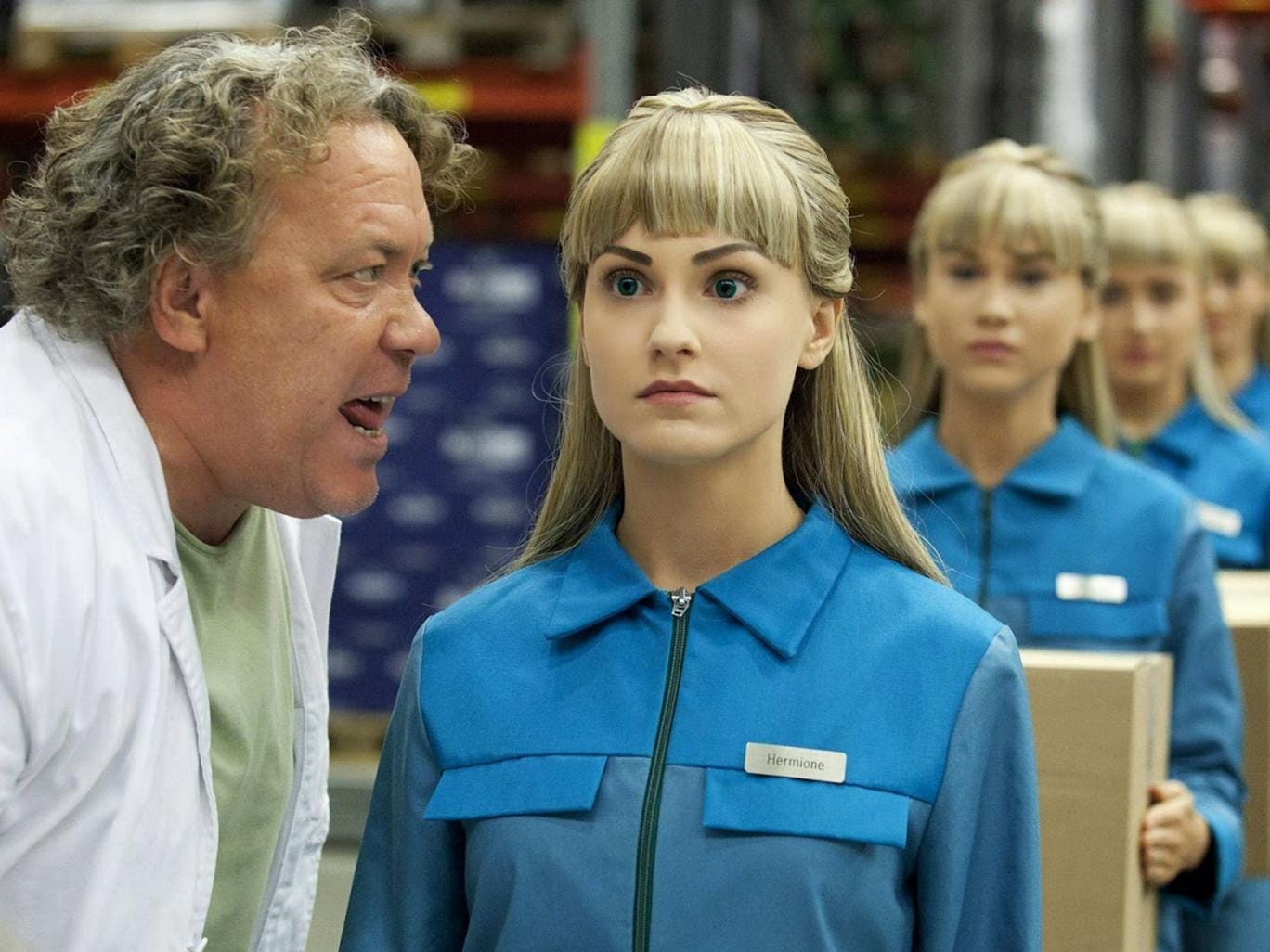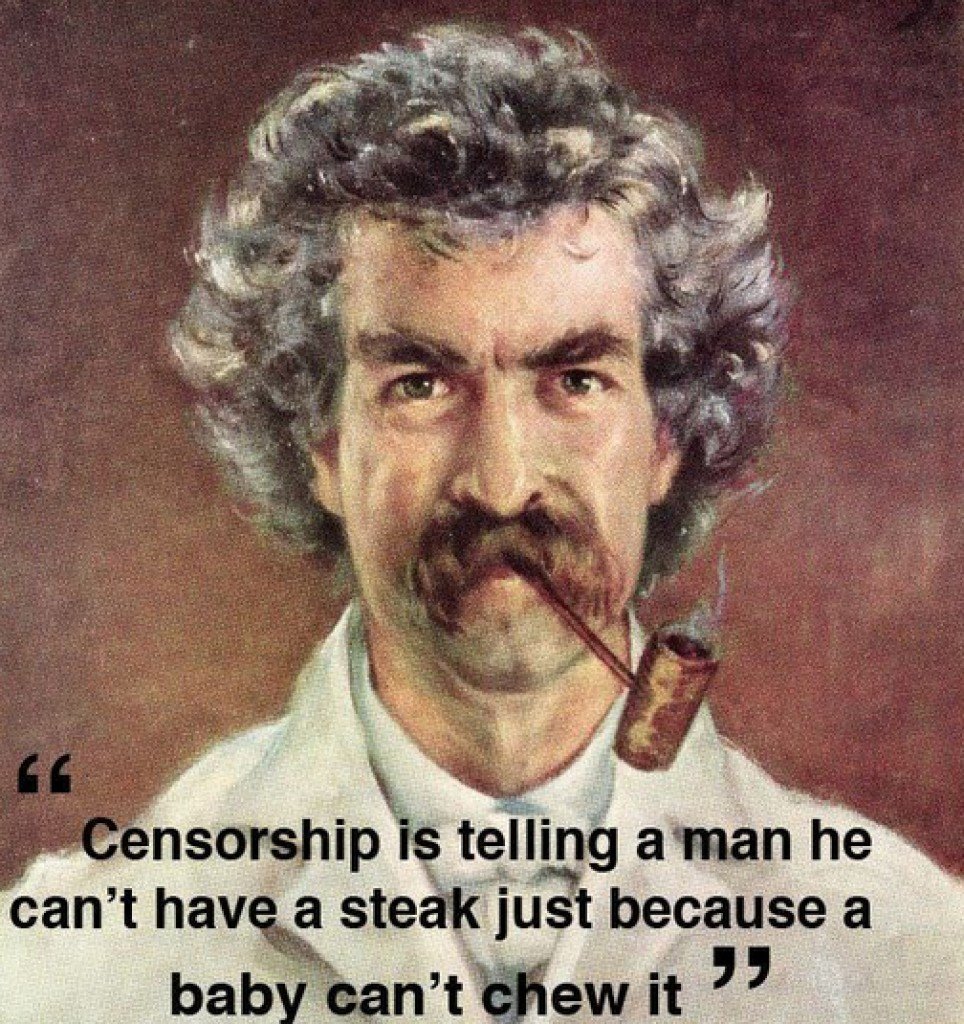This topic contains 14 replies, has 10 voices, and was last updated by ![]() narwhal 1 year, 8 months ago.
narwhal 1 year, 8 months ago.
- AuthorPosts
Automation Doesn’t Just Destroy Jobs–It Destroys Profits, Too [1][2]
Charles Hugh Smith
OfTwoMinds.com
Nov 9, 2015Charles Hugh Smith is a contributing editor to PeakProsperity.com and the proprietor of the popular blog OfTwoMinds.com. He is the author of numerous books, including Why Everything Is Falling Apart: An Unconventional Guide To Investing In Troubled Times.

[Part 1]
The idea that taxing the owners of robots and software will fund guaranteed incomes for all is not anchored in reality.
Automation is upending the global order by eliminating human labor on an unprecedented scale–and the status quo has no reality-based solution to this wholesale loss of jobs.
Two recent articles highlighted the profound consequences of advances in robotics and AI (artificial intelligence) on employment: four fundamentals of workplace automation [3] and Robots may shatter the global economic order [4] within a decade as the pace of automation innovation has gone from linear to parabolic (via Mish).
The status quo apologists/punditry have offered two magical-thinking solutions to the sweeping destruction of jobs across the entire spectrum of paid work:
1. Tax the robots (or owners of robots) and use the revenues to pay a guaranteed income to everyone who is unemployed or underemployed.
2. Let the price of labor fall to the point that everyone has a job of some sort, even if the pay is minimal.
Neither one is remotely practical, for reasons I will explain.
Let’s examine the misguided fantasy that automation/robotics will generate enormous profits for the owners of robots.
Here’s the problem in a nutshell:
As automation eats jobs, it also eats profits, since automation turns labor, goods and services into commodities. When something is commoditized, the price drops because the goods and services are interchangeable and can be produced almost anywhere.
Owners must move commoditized production to low-tax regions if they want to retain any profit at all.
Big profits flow from scarcity, i.e. when demand exceeds supply. If supply exceeds demand, prices fall and profits vanish.
(Monopoly is a state-enforced scarcity. In our state-cartel economy, there are many monopolies or quasi-monopolies. While eliminating these would lower costs, that wouldn’t reverse the wholesale destruction of jobs and profits–it would only speed the process up.)
The other problem the “tax the robots and everything will be funded” crowd overlooks is the falling cost of software and robots lowers the barriers to competition: nothing destroys profits like wave after wave of hungry competitors entering a field.
The cost of automation and robotics is falling dramatically. This lowers the cost of entry for smaller, hungrier, more nimble competitors, and lowers the cost of increasing production. When virtually any small manufacturer can buy robots for less than the wages of a human laborer, where’s the scarcity necessary to generate profits?
The parts needed to assemble a $45 tablet are dropping in price, and the profit margins on those parts is razor-thin because they’re commodities. Software such as the Android operating system is free, and many of the software libraries needed to assemble new software are also free.
Automation increases supply and lowers costs. Both are deadly to profits.
Here’s the core problem with the idea that taxing the owners of robots and software will fund guaranteed incomes for all: the more labor, goods and services are automated/commoditized, the lower the profits.
The current narrative assumes more wealth will be created by the digital destruction of industries and jobs, but real-world examples suggest the exact opposite: the music industry has seen revenues fall in half as digital technology ate its way through the sector.
A $14 billion industry is now a $7 billion industry. Profits and payroll taxes collected from the industry have plummeted. So much for the fantasy that technology always creates more jobs than it destroys.
As subscription music services replace sales of songs and albums, revenues will continue to decline even as consumers have greater access to more products. In other words, the destruction of sales, employment and profits is far from over.
Examples of such radical reductions in paid labor abound in daily life.
To take one small example, our refrigerator recently failed. The motor was running but the compartment wasn’t being cooled.
Rather than replace the appliance for hundreds of dollars or hire a high-cost repair service, I looked online, diagnosed the problem as a faulty sensor, watched a tutorial on YouTube (what I call YouTube University), ordered a new sensor for less than $20 online and completed the repair at no cost beyond a half-hour of labor, which cost me nothing in terms of cash spent.
The profit earned by YouTube was minimal, as was the profit of the firms that manufactured the sensor and shipped it. The sales and profits that were bypassed by using nearly-free digital tools were an order of magnitude higher.
I was recently interviewed via Skype by an online journalist with millions of views of his YouTube channel. A decade ago when he worked in mainstream TV journalism, an interview required costly, time-consuming travel (for the crew or the subject), a sound engineer, a camera operator, the talent (interviewer), editor and managerial review. These six jobs have been rolled into one with digital tools, and travel has been eliminated entirely.
Some will argue that the quality of the video and sound isn’t as high, but the quality of the user experience is ultimately based on the viewer’s display, which is increasingly a phone or tablet. So in terms of utility, value and impact, the product (i.e. output) produced by one person replaces the conventional media product that required six people.
My own solo digital content business would have required a handful of people (if not more) only a decade ago. With digital tools and services, it now requires just one person. Those of us who must work with digital tools to survive know firsthand that what once required a handful of workers must now be produced by one person if we hope to earn even a marginally middle-class income.
Multiply an appliance that doesn’t need to be replaced and a repair service that doesn’t need to be hired, a half-dozen positions replaced by one part-time job, a fully functional commodity tablet that costs 10% of the high-profit brand and you understand why profits will plummet as software eats the world.
These are not starry-eyed examples based on projections; these are real-world examples of widely available digital technologies destroying costs, sales and profits on a massive scale.
Some observers have suggested taxing wealth rather than profits to fund the super welfare state of guaranteed income for all. But the value of assets ultimately rests on their ability to generate a profit. As profits fall, wealth may be more chimerical than these observers believe.
We’ll look at the rising costs of human labor and explore why this trend will persist even as labor becomes increasingly surplus

[Part 2]
While many hope that every low-skill person can become a high-skilled worker, training people doesn’t create jobs for them.
One of the most appealing beliefs about technology–that it will always create more jobs than it destroys–is no longer true.
It was true in the first and second industrial revolutions, for one simple reason: the new industrial revolution created vast numbers of low-skill jobs that offered displaced workers abundant opportunities for work that did not require more than entry-level skills.
It only took a few minutes to learn one’s job on an assembly line in the first industrial revolution, and many workers recoiled from the sheer boredom and physical repetitiveness of this work. This is one reason why Henry Ford famously raised his workers’ wages to the then-princely sum of $5/day: the high turnover of people quitting was killing him.
I covered this in The Alienation of Work (April 15, 2014) [5]:
- After the success of the moving assembly line, Henry Ford had another transformative idea: in January 1914, he startled the world by announcing that Ford Motor Company would pay $5 a day to its workers. The pay increase would also be accompanied by a shorter workday (from nine to eight hours). While this rate didn’t automatically apply to every worker, it more than doubled the average autoworker’s wage.
While Henry’s primary objective was to reduce worker attrition–labor turnover from monotonous assembly line work was high -newspapers from all over the world reported the story as an extraordinary gesture of goodwill.
In other words, labor had scarcity value. This is no longer true, as we shall see.
The second industrial revolution (telephony, radio, consumer marketing) required more training, but there were tens of millions of relatively well-paying entry-level sales and paperwork positions created for people who were automated out of factories. For example, my father made enough selling appliances at Sears in the 1950s to buy a house, support a wife and four kids and pay for luxuries such as modest family camping vacations.
This is simply not true in the third industrial/Digital Revolution: the jobs being created are not entry level or low-skill, except for informal menial jobs like running into Target to do some shopping for a highly-paid person who will pick up their items from you on the curb.
These menial service jobs are often awarded to the lowest bidder, while the enterprise that operates the auction skims a significant chunk of the revenues.
Believers in “technology always creates more jobs than it destroys” also overlook the work of Immanuel Wallerstein (and others) who identified the job-killing trend that cannot be reversed: the cost of labor is rising for systemic reasons that supercede supply and demand of labor.
In other words, the total compensation costs of labor rise even when labor is abundant or in over-supply.
Wallerstein identifies three long-term forces that are undermining capitalism’s key function, the accumulation of more capital:
1. Urbanization, which has increased the cost of labor.
2. Externalized costs (dumping private waste into the Commons, environmental damage and depletion, etc.) are finally having to be paid.
3. Rising taxes as the Central State responds to unlimited demands by citizens for more services (education, healthcare, etc.) and economic security (pensions, welfare).
I explain these in more detail in Is This the Terminal Phase of Global Capitalism 1.0? (February 8, 2013). [6]
In other words, the costs of labor paid by the employer are rising for structural reasons, even while supply and demand is reducing the wages paid to employees. This is why labor costs have tripled in China, while take-home pay hasn’t tripled.
Labor overhead is all the labor-related expenses paid by employers: the vast majority of pundits, most of whom have never hired a single employee with their own money, tend to overlook the overhead costs paid by employers: workers compensation insurance (soaring), healthcare insurance (soaring), disability insurance, unemployment insurance, 401K or pension contributions, etc.
The “solution” in the Digital Revolution is to eliminate all labor overhead and transfer all these risks and expenses onto the free-lancer.
As a free-lancer/self-employed worker, I am well-acquainted with these overhead costs: it costs $15,300 annually to purchase stripped-down healthcare insurance for my self-employed wife and I.
This is $7.66 per hour for a 2,000-hour work year. The total value of the labor overhead paid by employers for someone of my age and experience exceeds the $15/hour being trumpeted as a minimum wage.
In other words, it would cost an employer $30/hour to pay me $15/hour.
The net result of reducing labor to auctioned-off surplus is that the state, and thus ultimately the taxpayer, is paying the overhead costs. The person being paid $5 to shop at Target (or $50/day to deliver whatever the high-earners didn’t order through Amazon) for a top 5% earner can’t possibly afford $15,000 a year for healthcare insurance, much less all the other benefits paid by employers.
So they end up getting social welfare benefits for low-income people such as Medicaid, food stamps, Section 8 housing subsidies, etc. In other words, this form of menial labor is ultimately subsidized by taxpayers.
The person paying someone a menial sum to perform some service may think they’re “hiring” that person, but in reality the taxpayer is footing the majority of the costs–the real “employer” is the taxpayer.
In other words, this informal “work” is a simulacrum of paid employment. All the costs being offloaded onto the informal worker end up in the taxpayer’s lap.
How can this be lauded as a functioning system of employment? It can’t, because it isn’t.
Those who believe the Digital Revolution will create more work also overlook the realities of risk when it comes to employing people. Once again, I wonder how many of these people have ever hired a single person on their own dime, i.e. with their own money, paid the overhead costs of an employer and took the risks of hiring employees.
Here’s one example from real life: you hire a fellow cash-only (informally or through some sort of labor auction exchange) to clean the roof gutters on your house. He falls off your roof and is seriously injured. You may think your insurance will cover you, or the labor auction exchange’s claim of coverage will protect you, but guess again: you could be on the hook for a huge settlement/judgment that will not be paid by your homeowner’s insurance or the labor exchange.
Labor laws don’t disappear just because you’ve hired someone informally. Anyone violating labor laws is also exposed to lawsuits and claims, exploratory “fishing” or otherwise. How about claims of ethnic, religious or gender discrimination? Those don’t disappear just because you’re an informal employer.
Many people seem unaware that a $10,000 claim for violating labor statutes may cost $10,000 or more to defend in court (or in pre-trial legal expenses). You’re out $10,000 either way.
Few pundits seem to put themselves in the shoes of those performing menial tasks for their “betters” for minimal compensation. What are the risks and rewards for managing an injury (real or faked) for those auctioning off their labor for a few dollars?
Those within the insurance industry know that there is an entire class of people who claim injuries in department stores, etc. so they can settle for $5,000 each “incident”– and they get the settlement because it will cost the corporation far more than $5,000 to contest, investigate, go to court, etc.
How good a job will you get when the worker bid so little to get the work? Once again, few pundits seem to put themselves in the shoes of those performing menial tasks for their “betters” for minimal compensation. You want to supervise people who are rushing to finish the task so they can hurry to their next low-paying gig? No thanks; be my guest. From my experience, it will cost me more time/money to re-do the work that was done poorly than it would to have done the work myself and forget hiring someone for the lowest bid.
This is why I will never hire anyone again, no matter how low the wage or cash payment: the risks are way too high and the rewards far too modest.
Anyone who’s been a “real” employer like I have knows the realities, risks and costs. Those who’ve never hired a single employee with their own money are ignoring the realities.
When I need some real work done, I hire licensed contractors who pay all the labor overhead costs and pay for liability and disability coverage. These are very costly, so the service is costly. But you get what you pay for.
As for hiring someone myself–I can’t afford the true costs or risks. It literally makes no financial sense to hire someone if you pay the full freight. I will hire formal enterprises that pay the full costs of their employees, but only when I can’t do the work myself.
Setting aside these issues, the ultimate killer of jobs is scarcity and surplus.
The reality of capitalism is that profits and high wages only flow to what’s scarce, and as Michael Spence et al. explain in Our New Robot Overlords & The Third Type of Capital (October 18, 2014), [7] conventional labor and capital are no longer scarce.
Conventional low-skill labor has no scarcity value in the Digital Revolution, and its value is heading to zero, regardless of what we may believe or hope. The same is true of conventional financial capital, which is why the superwealthy are buying existing income streams rather than investing in new (and risky) production.
Believers in “technology always creates more jobs than it destroys” never address the knotty issues of taxpayer subsidies, secular trends of higher labor costs, the eradication of low-skill jobs that pay enough to live on without taxpayer subsidies, or the structural surplus of conventional labor and capital–the scarcity value of both are dropping to zero.
While many hope that every low-skill person can become a high-skilled worker, training people doesn’t create jobs for them. As I have often noted, churning out 100,000 PhDs in chemistry doesn’t automatically create jobs for these experts. Indeed, there is already a surplus of highly educated/trained workers in a great many fields.
The truth is we need a new system--one that deals with the realities of labor, capital, scarcity and surplus head-on. The need for a social economy rather than a merely financial one is why I wrote my new book.
This entry is based on my new book A Radically Beneficial World: Automation, Technology and Creating Jobs for All [8].
Charles Hugh Smith
OfTwoMinds.comCitations
[1] https://www.oftwominds.com/blognov15/automation-profits11-15.html
[2] https://www.oftwominds.com/blognov15/labor-scarcity11-15.html
[3] https://www.mckinsey.com/business-functions/digital-mckinsey/our-insights/four-fundamentals-of-workplace-automation
[4] https://www.telegraph.co.uk/finance/economics/11978542/Robots-may-shatter-the-global-economic-order-within-a-decade.html
[5] https://www.oftwominds.com/blogapr14/alienated-work4-14.html
[6] https://www.oftwominds.com/blogfeb13/terminal-capitalism2-13.html
[7] https://www.oftwominds.com/blogoct14/robot-overlords10-14.html
[8] https://www.amazon.com/gp/product/B0178MQI1M/ref=as_li_tl?ie=UTF8&camp=1789&creative=9325&creativeASIN=B0178MQI1M&linkCode=as2&tag=charleshughsm-20&linkId=VSSCC5UY23MIZ3MXThere are some holes in his logic.
Automation will cut profits because without jobs no one can buy anything.
Henry Ford knew that.
Love is just alimony waiting to happen. Visit mgtow.com.
Luddites.
That’s not a rebuttal.
All my life I've had doubts about who I am, where I belonged. Now I'm like the arrow that springs from the bow. No hesitation, no doubts. The path is clear. And what are you? Alive. Everything else is negotiable. Women have rights; men have responsibilities; MGTOW have freedom. Marriage is for chumps. If someone stands in the way of true justice, you simply walk up behind them and stab them in the heart-R'as al Ghul.
I wonder kind of economy would exist if someone can 3D print their own robot and solar panels?
All my life I've had doubts about who I am, where I belonged. Now I'm like the arrow that springs from the bow. No hesitation, no doubts. The path is clear. And what are you? Alive. Everything else is negotiable. Women have rights; men have responsibilities; MGTOW have freedom. Marriage is for chumps. If someone stands in the way of true justice, you simply walk up behind them and stab them in the heart-R'as al Ghul.
Badger wrote:
Luddites.
https://en.wikipedia.org/wiki/Luddite
That’s not a rebuttal.Of course not. It is historical perspective. Capitalism, to paraphrase to former economist Schumpeter, is creation and destruction of jobs. Robots are just another phase.
While doing genealogical research on my ancestors, I found that in the early 1800s people were arrested for stealing clothes. Mechanization made clothes cheap and common. It created jobs to transport the clothes, advertising to market them, fashion, and salespersons.
When I was in grade and high school in the 1950s, television (black and White) was becoming affordable. It was a common and repeated certainty that movie theaters and movies were doomed, never to be seen again. That is why you never see any movies or movie theaters today — oh wait, they did not disappear!
The railroads destroyed the pony express. One of my ancestors took months to travel the Old Oregon Trail to get to Oregon in 1852. Twenty years later his brother went by railroad. Automobiles destroyed the horse culture. Highways were constructed, rubber tires invented, gasoline refined for engines, mechanics to fix them, steel industry to make parts, and so forth.
History, history, history!
Also, automation destroys tax revenue. Less workers means less people paying taxes.
Also, automation destroys tax revenue. Less workers means less people paying taxes.
The introduction of the AUTOmobile or all the other examples of automation did not destroy tax revenues. The overall wealth of the population increased after their introduction. The average American has wealth that King Louis 14th of France could not have imagined with their auto, television, computers, iPhone, medical care, etc.
Fiscal and monetary policies are more often a problem with fewer people working in modern societies.
Automation doesn’t mean less workers; just less workers in a particular sector. When agriculture became industrialized and a machine could do the work of 100 men, everyone thought the economy would be destroyed, but then all the workers moved to the factories and the economy boomed. Then when factories were automated everyone thought the economy would be destroyed, but then all the workers moved into the service sector and the economy boomed further.
Badger is correct. Capitalism works through creative destruction. The short-term effect of new technology like automation is that some people are put out of work, but the long term effect is an increased standard of living for all. Industrialized agriculture, factories, and automation are the reason that many people in 1st world countries enjoy a standard of living that kings and emperors of the past could not even have dreamed of. Let’s make decisions about new technology by looking at what’s happened in the past rather than freaking out about the short term future.
Women are better at multitasking? Fucking up several things at once is not multitasking.

Anonymous12There are some holes in his logic.
Automation will cut profits because without jobs no one can buy anything.
Henry Ford knew that.
That’s it. Our economy depends on people buying crap they don’t really need or can get cheaper by doing it themselves like making their own coffee for example. Cut the jobs you have less money being spent.
Of course not. It is historical perspective. Capitalism, to paraphrase to former economist Schumpeter, is creation and destruction of job
Schumpeter believed capitalism would inevitably destroy itself and collapse into socialism.
"The secret to happiness is freedom... And the secret to freedom is courage." - Thucydides
The introduction of the AUTOmobile or all the other examples of automation did not destroy tax revenues. The overall wealth of the population increased after their introduction.
Ah, but that was a factory set-up which employed people.
Modern automation is about shipping off jobs overseas, and other ways about reducing the numbers of jobs at the local level.
And any “wealth” on the books in present day is through borrowed money.
As I have often noted, churning out 100,000 PhDs in chemistry doesn’t automatically create jobs for these experts.
Exactly. In Australia we have a joke about this.
Q – What do you do when a Gender Studies graduate turns up on your doorstep?
A – Pay her for the pizza and send her on her way.
#ManOut
Schumpeter believed capitalism would inevitably destroy itself and collapse into socialism.
Another failed socialist prediction.
Some of what he says doesn’t add up. Or at least, he is leaving off some of effects from the cause of automation. Many of the effects are positive and in many ways cancel out the negative effects.
For example, he mentioned that automation kills profits, because it allows for greater competition in the market do to lower cost of production…and he implies this is bad? First off more competitors in the market means more jobs as they won’t all be automated. It also means less income equality, which I thought was a big concern. It also means that the good and services provided to the industry sector are cheaper and more readily available to more people.
And those that can’t work in that sector anymore? The can go find employment in other sectors, driving those prices down. Or they go work in new markets that couldn’t exist before, either because tech couldn’t deliver it cheap enough, or there wasn’t enough labor to support it.
I’m not saying their aren’t growing pains. Switching careers because your job is gone sucks. Seeing your cash cow dry up isn’t fun either. But as others have pointed out, this is what happens, but we’ve always adapted and moved on. History has shown this.
History has also shown that government attempts to control the markets quite off only makes things worse.
Ok. Then do it.
- AuthorPosts
You must be logged in to reply to this topic.

921526
921524
919244
916783
915526
915524
915354
915129
914037
909862
908811
908810
908500
908465
908464
908300
907963
907895
907477
902002
901301
901106
901105
901104
901024
901017
900393
900392
900391
900390
899038
898980
896844
896798
896797
895983
895850
895848
893740
893036
891671
891670
891336
891017
890865
889894
889741
889058
888157
887960
887768
886321
886306
885519
884948
883951
881340
881339
880491
878671
878351
877678













